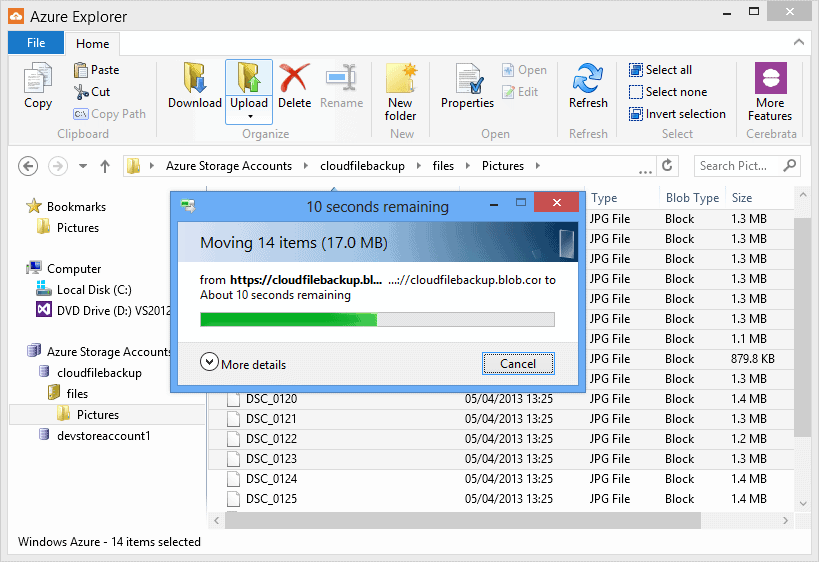Cumulative Security Update for Internet Explorer 8 in Windows 7 x64 Edition (KB2817183) This update addresses the vulnerability discussed in Microsoft Security Bulletin MS13-028. To find out if other security updates are available for you, see the Additional Information section at the bottom of this page. Microsoft Azure Storage Explorer is a standalone app that makes it easy to work with Azure Storage data on Windows, macOS, and Linux. The app can connect to storage accounts hosted on Azure, national clouds, and Azure Stack. This guide summarizes solutions for issues that are commonly seen in Storage Explorer. Azure RBAC permissions issues. Azure Data Explorer is a fast, fully managed data analytics service for real-time analysis on large volumes of data streaming from applications, websites, IoT devices, and more. You can use Azure Data Explorer to collect, store, and analyze diverse data to improve products, enhance customer experiences, monitor devices, and boost operations. Fast and highly scalable data exploration service An Azure Data Explorer cluster is a pair of engine and data management clusters which uses several Azure resources such as Azure Linux VM’s and Storage. The applicable VMs, Azure Storage, Azure Networking and Azure Load balancer costs are billed directly to the customer subscription.
Azure Storage Explorer is a free tool from Microsoft that allows you to work with Azure Storage data on Windows, macOS, and Linux. This topic describes how to use it to upload and download data from Azure Blob Storage. The tool can be downloaded from Microsoft Azure Storage Explorer.
Upload, download, and manage Azure blobs, files, queues, and tables, as well as Azure Cosmos DB and Azure Data Lake Storage entities. Easily access virtual machine disks, and work with either Azure.
This menu links to technologies you can use to move data to and from Azure Blob storage:
Note
If you are using VM that was set up with the scripts provided by Data Science Virtual machines in Azure, then Azure Storage Explorer is already installed on the VM.

Note
For a complete introduction to Azure Blob Storage, refer to Azure Blob Basics and Azure Blob Service.
Prerequisites
This document assumes that you have an Azure subscription, a storage account, and the corresponding storage key for that account. Before uploading/downloading data, you must know your Azure Storage account name and account key.
What Is Azure Storage Explorer
- To set up an Azure subscription, see Free one-month trial.
- For instructions on creating a storage account and for getting account and key information, see About Azure Storage accounts. Make a note the access key for your storage account as you need this key to connect to the account with the Azure Storage Explorer tool.
- The Azure Storage Explorer tool can be downloaded from Microsoft Azure Storage Explorer. Accept the defaults during install.
Use Azure Storage Explorer
The following steps document how to upload/download data using Azure Storage Explorer.
Azure Cloud Storage Explorer Download
- Launch Microsoft Azure Storage Explorer.
- To bring up the Sign in to your account... wizard, select Azure account settings icon, then Add an account and enter you credentials.
- To bring up the Connect to Azure Storage wizard, select the Connect to Azure Storage icon.
- Enter the access key from your Azure Storage account on the Connect to Azure Storage wizard and then Next.
- Enter storage account name in the Account name box and then select Next.
- The storage account added should now be displayed. To create a blob container in a storage account, right-click the Blob Containers node in that account, select Create Blob Container, and enter a name.
- To upload data to a container, select the target container and click the Upload button.
- Click on the ... to the right of the Files box, select one or multiple files to upload from the file system and click Upload to begin uploading the files.
- To download data, selecting the blob in the corresponding container to download and click Download.
